Liz Lamour Croteau
Senior Consultant
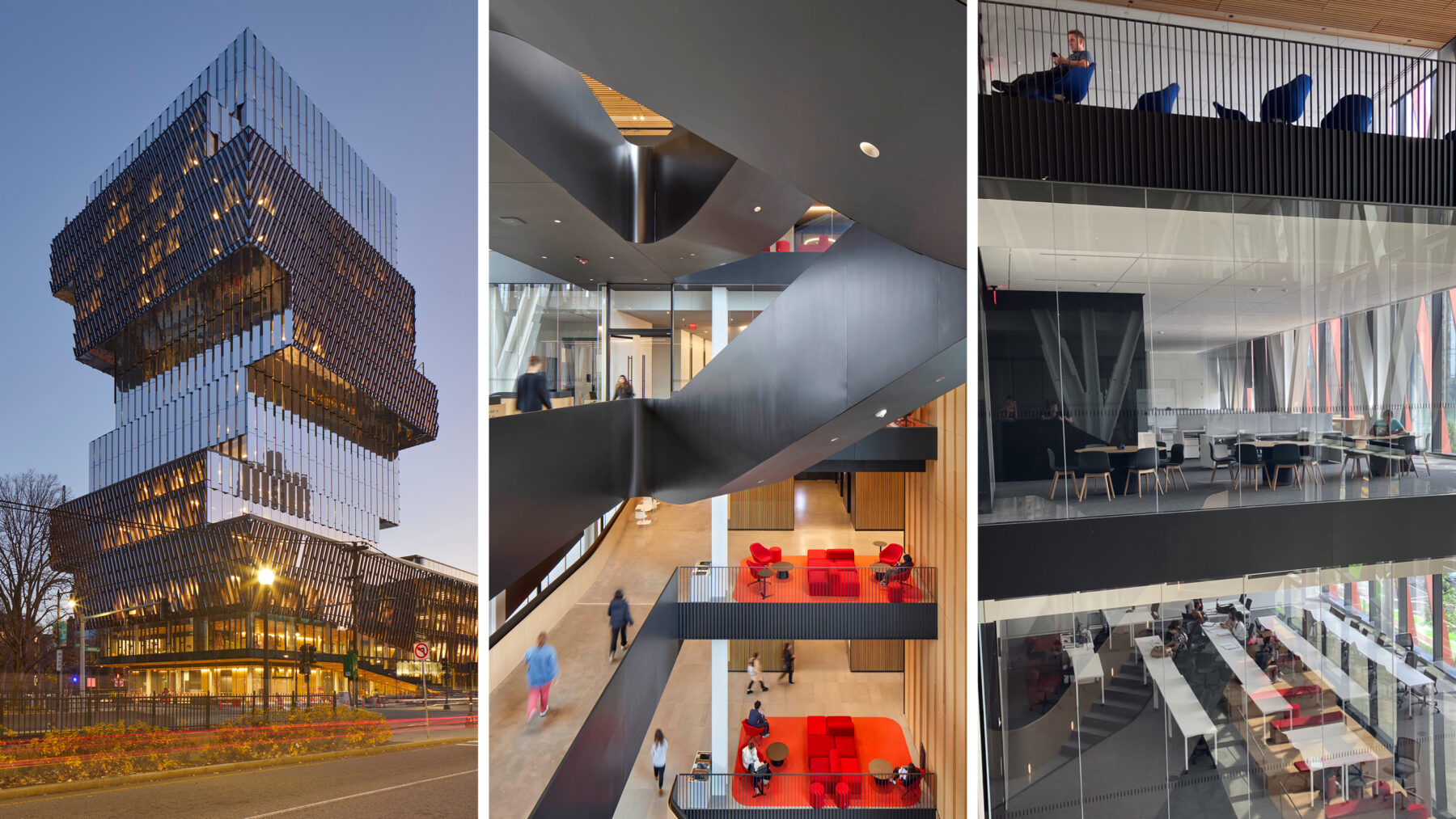
Boston University’s Charles River Campus has a brand-new major teaching center, the first in fifty years. LEED Platinum certified and Net Zero targeted, the Duan Family Center for Computing and Data Sciences (CCDS) is now the home for BU’s mathematics, statistics, and computer science departments. Acentech provided audiovisual and acoustics consulting services for this visually striking 345,000 SF, 19-story building, designed by KPMB Architects.
The CCDS project broke ground in December 2019, just four months before the global COVID-19 pandemic began. The pandemic changed the world in many ways and initiated a rapid shift to virtual learning and engagement. It therefore created an opportunity for BU and the CCDS project team to explore their audiovisual and technology ‘best practices.’ For example, BU’s pre-pandemic classroom standards for teaching technology were generally stand-alone spaces, which also could not be monitored remotely. This had the University’s LETS team (Learning & Event Technology Service) running to the affected room whenever AV system service calls came in to troubleshoot solutions, which often resulted in class and/or meeting disruptions. This was the accepted “normal” on campus, and our original AV design for the CCDS reflected that standard. After the pandemic began, though, we had an opportunity to reimagine the audiovisual systems needed to ensure they adequately serve our new and quickly changing world. Our counterparts at BU LETS felt the same way, and the AV design we had finalized only months prior was cracked back open to be re-envisioned as a new standard that could meet the University’s mission during COVID and beyond.
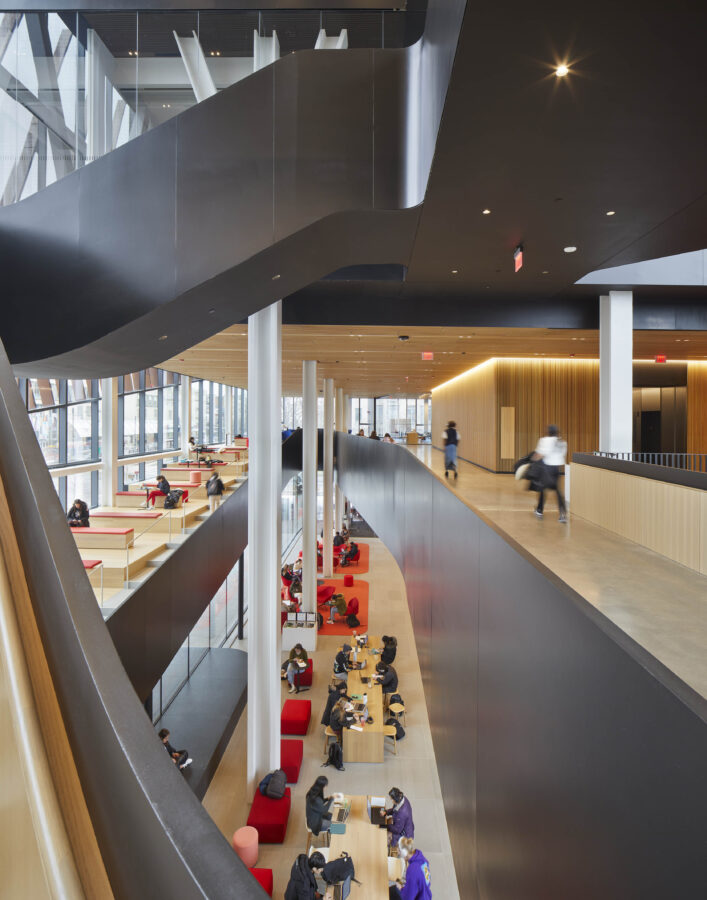
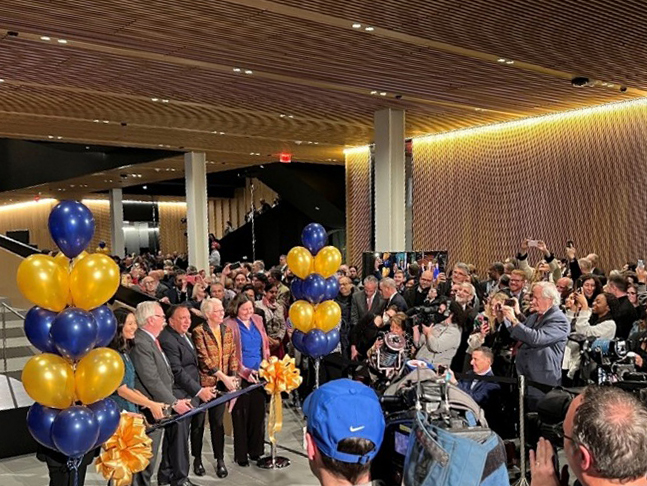
To begin that process and ensure a successful outcome, engaging BU faculty, staff, and student user groups was a crucial step in getting invaluable stakeholder input and support. Overall, the close collaboration between members of the design team and BU personnel proved essential in the success of the audiovisual system design of the CCDS project.
Our discussions began around the idea of moving towards an AVoIP topology – network-based transmission of audio, video, and control signals over IP infrastructure. At the onset of the pandemic, AVoIP was still relatively new and not as widely accepted as HDbaseT (HDbT) systems, which utilize a more point-to-point topology and large matrix switchers to route audio, video, and control. BU had historically been employing HDbT systems across campus, and while there is nothing wrong with those systems, AVoIP can offer greater flexibility, scalability, and be more cost-effective in the long term, particularly for larger systems. Most importantly, switching to an AVoIP infrastructure does not impact the overall user experience, allowing for a seamless transition for the students and staff. It additionally enables systems to be remotely managed from any location, increasing the BU LETS team’s efficiency and response time. As a result, we decided that this new, state-of-the-art building deserved a new, state-of-the-art audiovisual system standard to support it.
Our first step involved understanding how a new AVoIP system would impact the already established data network design. Early in the process, it was confirmed that the AVoIP system would live natively on the BU Network (as opposed to creating a separate, dedicated AVoIP network with hooks onto the BU Network for WiFi, control, etc.). Given that, the team worked to determine if the designed network pathways could accommodate the additional AVoIP cabling, and whether the IDF rooms had capacity for additional networking components. There were also mechanical and electrical requirements to consider for those components being added to the IDF rooms. Finally, we coordinated with BU’s IT team to get the network-based AV system online and reliably operational. A good working relationship with an institution’s IT/network team is critical for AVoIP deployments.
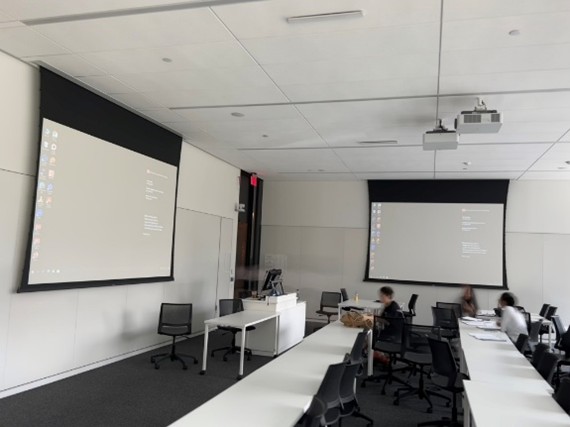
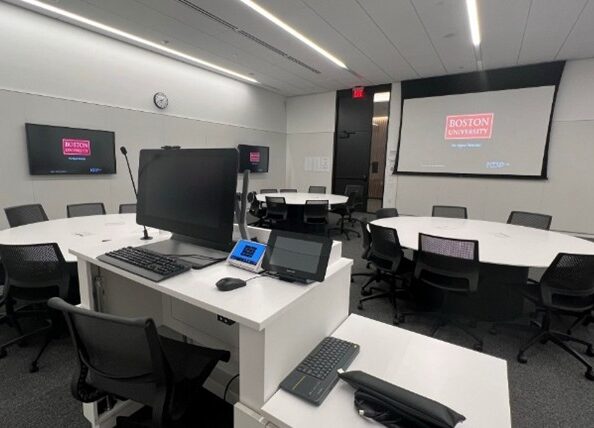
Once construction and installation were complete, the building could begin welcoming the surrounding community. As students, faculty, and visitors enter through the eastern side of the building, they’re greeted by a large interactive video wall showcasing the CCDS’s green design features: from geothermal wells, solar panels and exterior sun shading to ‘live streaming’ recycling data. The large monitor displays videos and interactive graphics demonstrating the above features (my favorites include the video showing the depth of the thermal wells compared to the height of Boston’s Hancock Tower), and interviews of the design team and BU Sustainability. Acentech guided the team on equipment selection and collaborated with KPMB to integrate the video wall into their high-end finishes. We also coordinated with BR+A’s mechanical team to ensure the video wall would have sufficient cooling to prevent the system from overheating. (If you do get a chance to visit, the integrated audio is often muted on the video wall, so be sure to hit “unmute” for the full experience.)
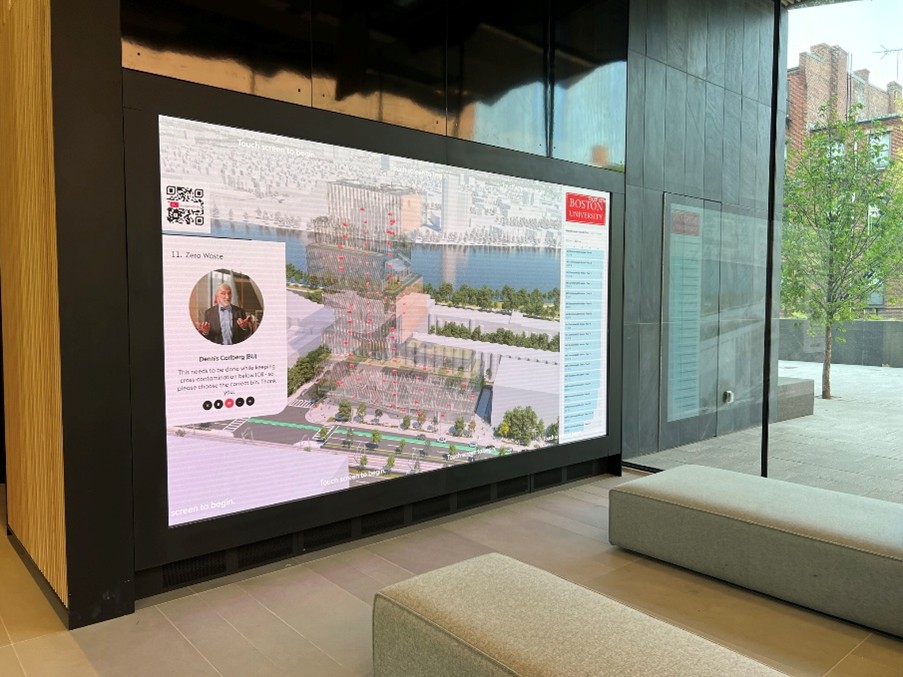
The premier space in the building, the multipurpose event space, is located along the entire north side of the 17th floor. It has dramatic double-height glazing and offers views east towards downtown Boston and beyond. The AV capabilities for this high-profile space include dual presentation walls in the main event space, along with an additional presentation wall in the adjacent pre-function space. The AV systems enable both basic presentations as well as more advanced conferences that utilize staff technicians for manual operation, such as a VIP giving an address that needs to be broadcast to a wider community.
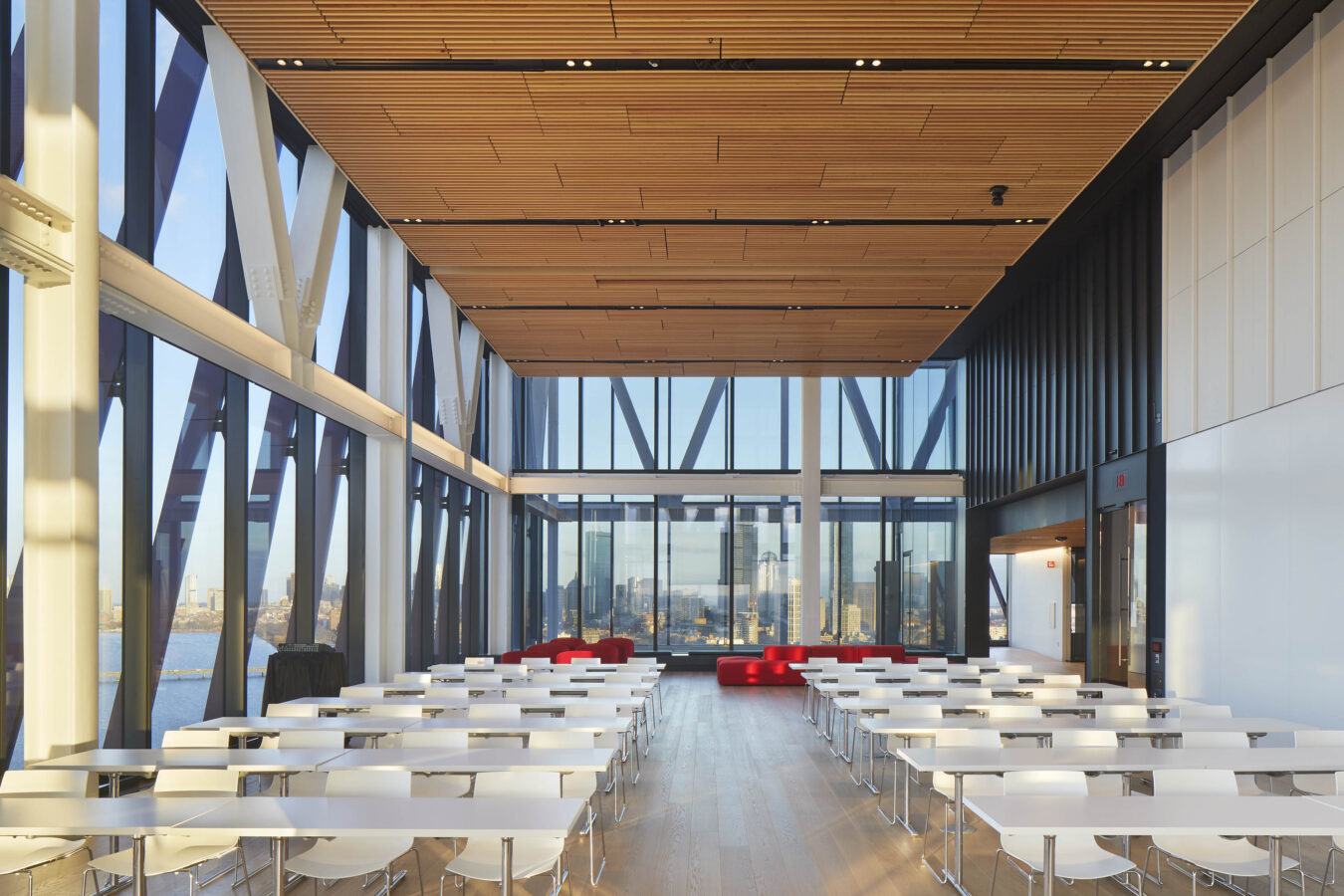
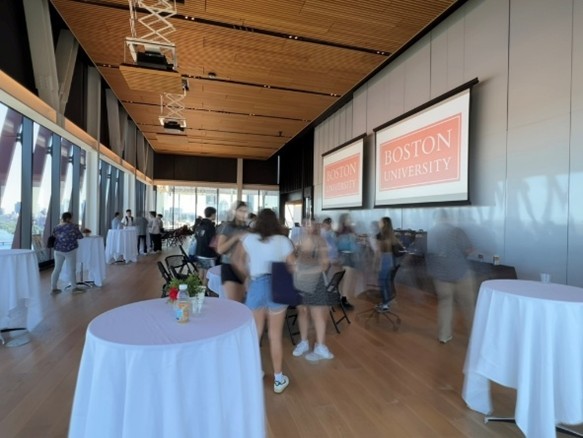
At the end of the day, the building makes a statement. It’s flashy and new and environmentally groundbreaking (pun not intended). I’m amazed at how quickly the students flocked to the new space and occupied every nook and cranny, some even oblivious to the fact that this site was just a parking lot six years ago. I want to extend an enormous amount of gratitude to the teams at KPMB, BR+A, all the different user groups and departments at BU (especially LETS), Red Thread, Suffolk Construction, the multiple manufacturers I had on speed dial for years, and my colleagues at Acentech for a successful project; together we created something to be immensely proud of.
Check out BU’s award-winning drone tour of the CCDS.